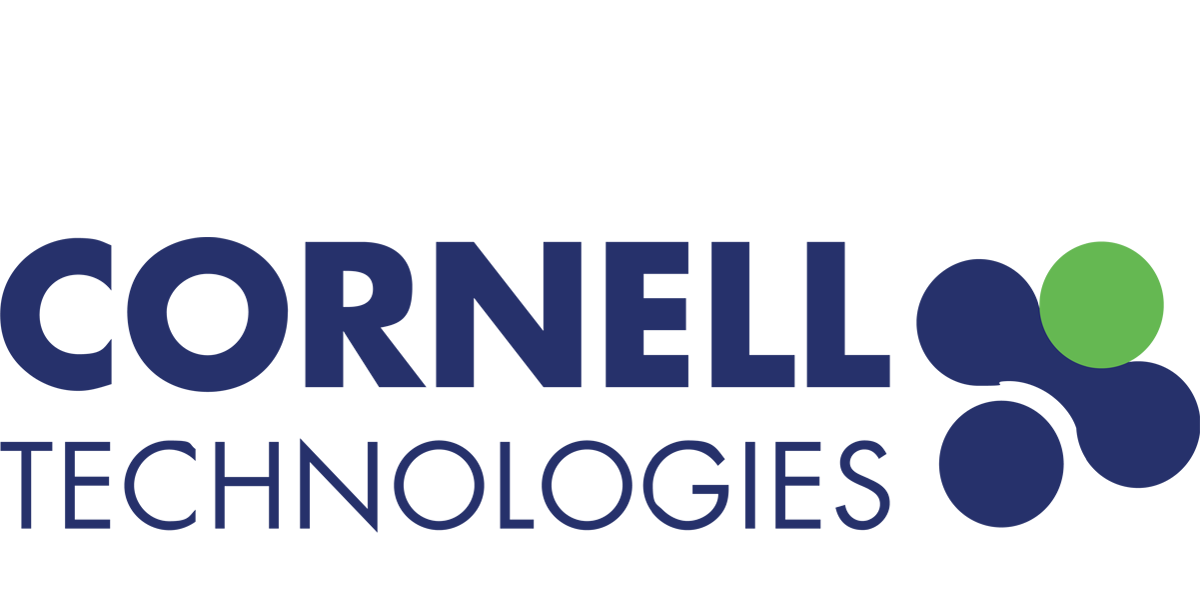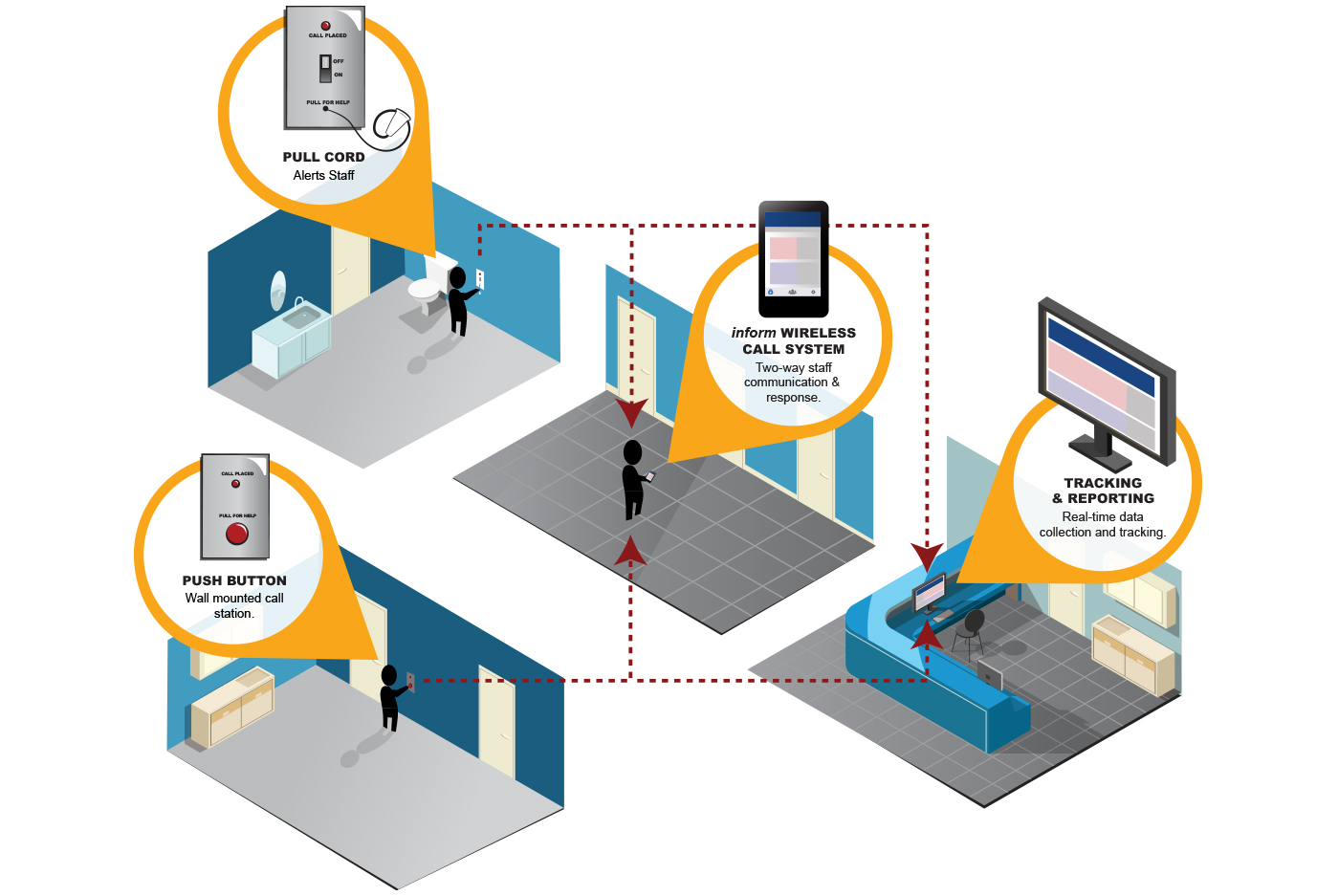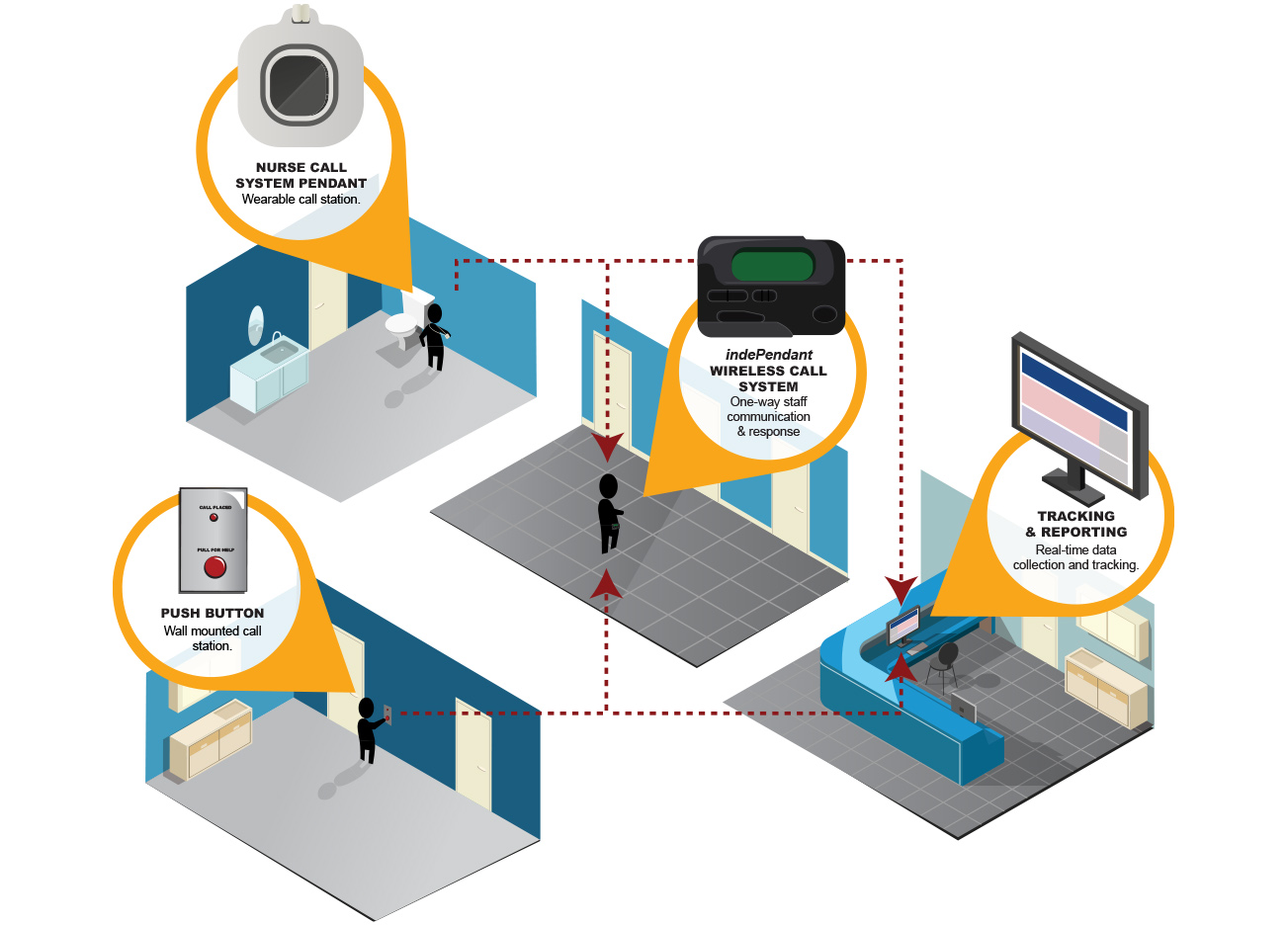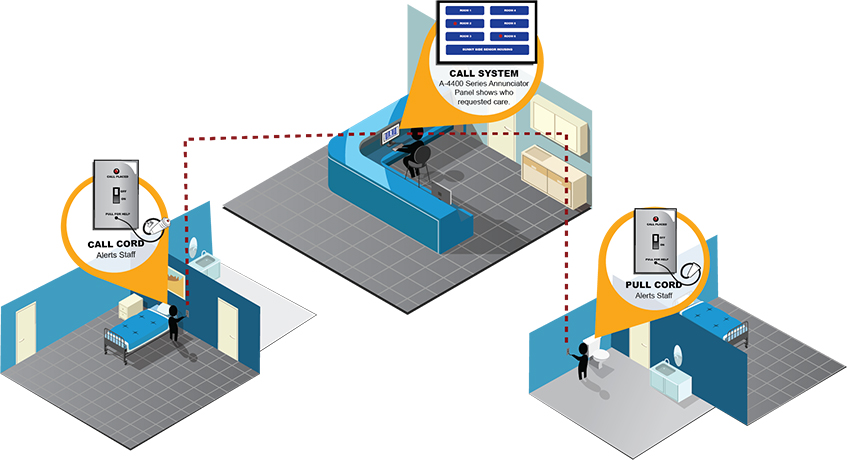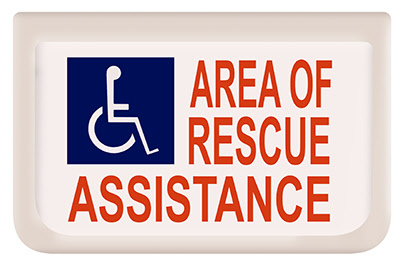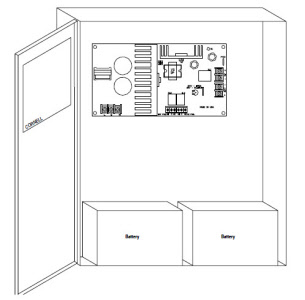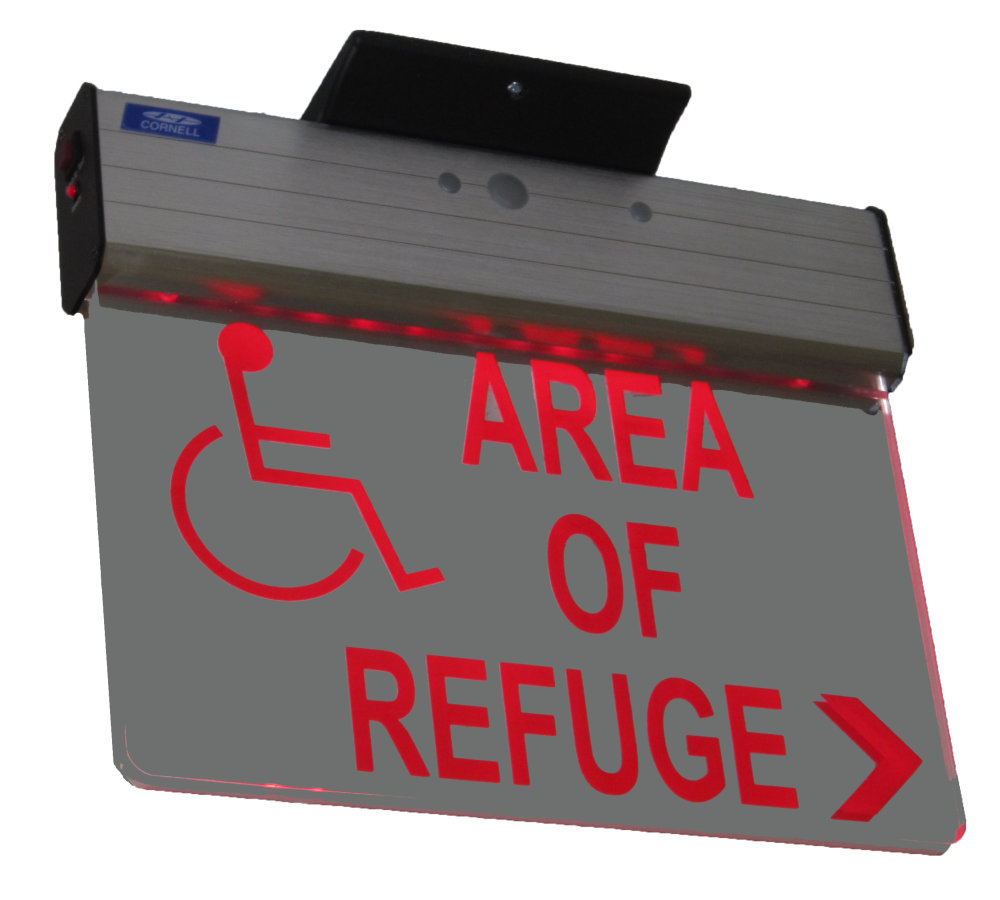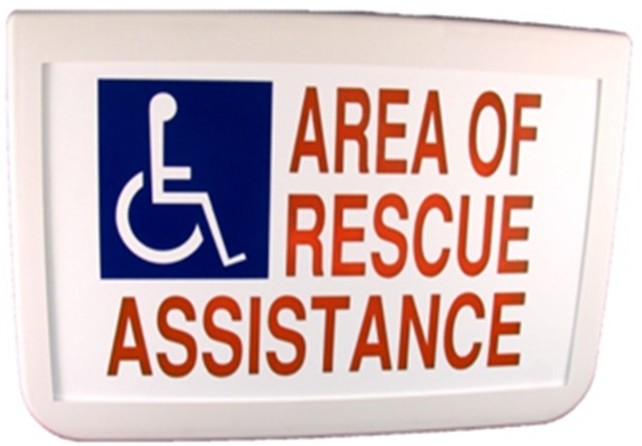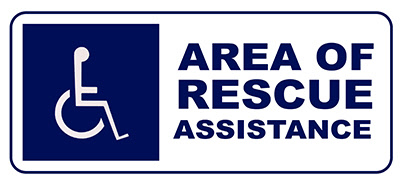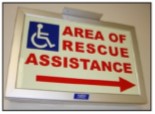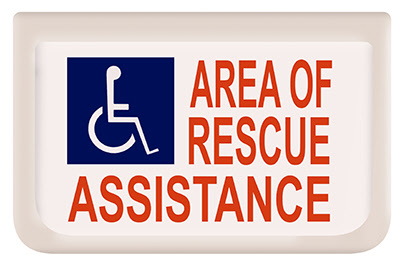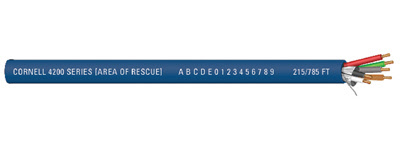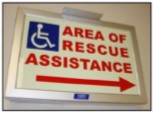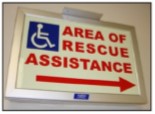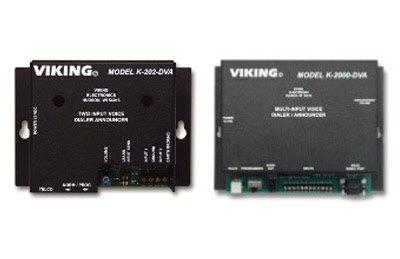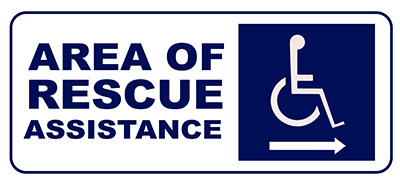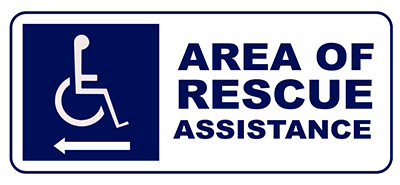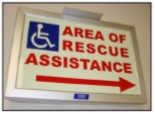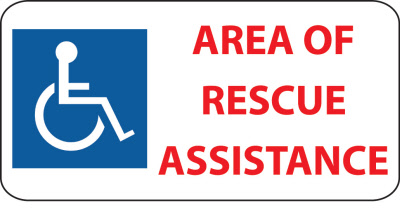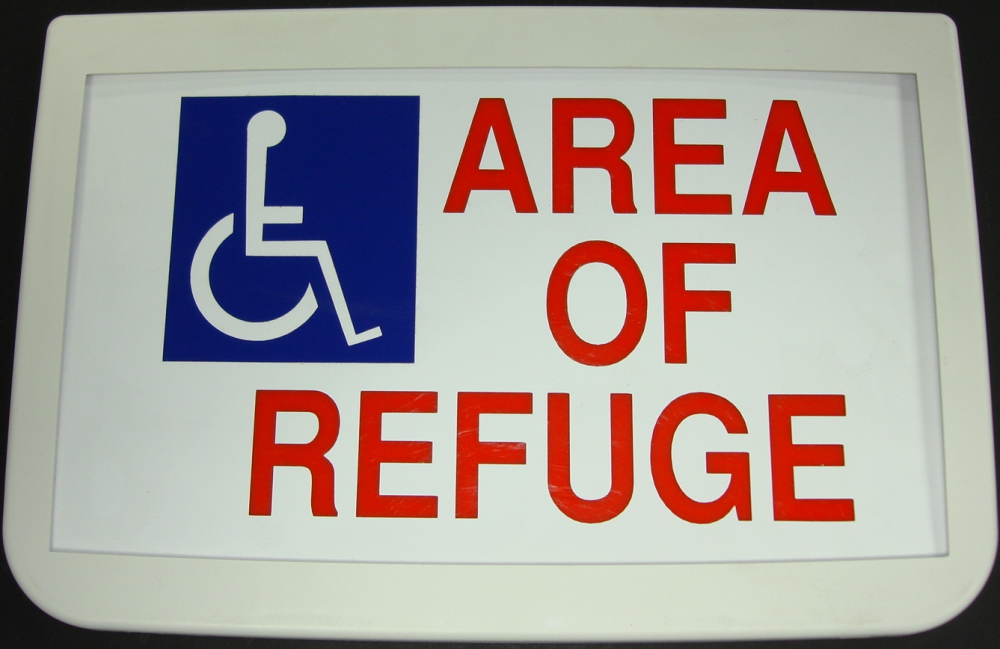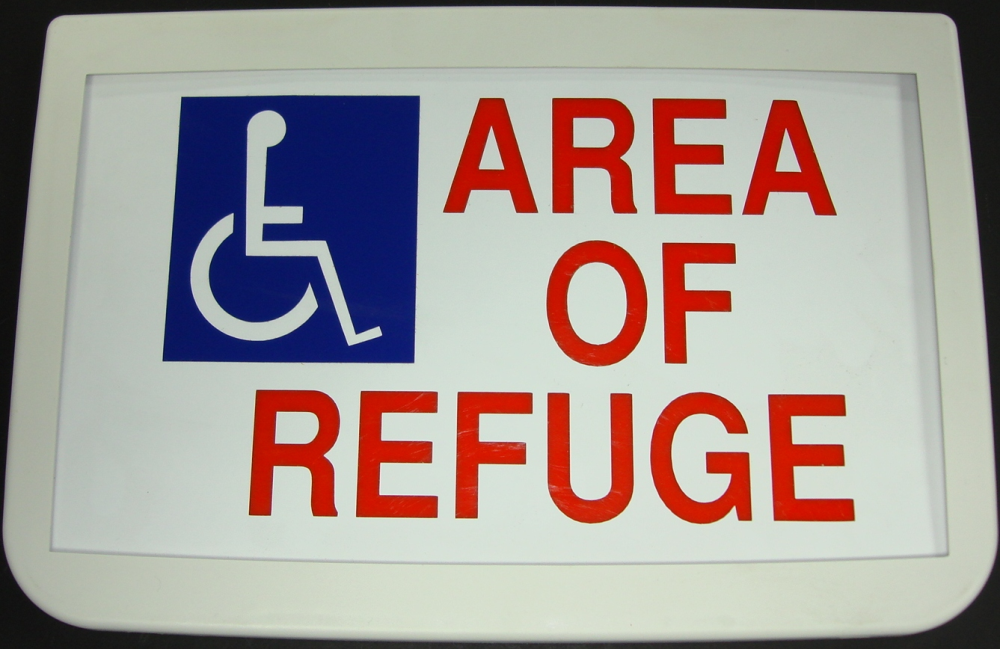4200 Analog Emergency Communication System for Area of Rescue
Cornell has assisted living communication systems in all 50 states.
Already have a communication system? Shop replacement parts below.
 Sign, Instructions, Luminescent, Push for Help 8" x 8"
Sign, Instructions, Luminescent, Push for Help 8" x 8"
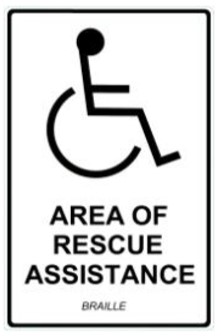 Sign, Area of RESCUE, Luminescent, Braille 7" x 11"
Sign, Area of RESCUE, Luminescent, Braille 7" x 11"
ADA Area of Rescue Assistance Call Systems for Emergency Communication in Hospitals and Other Medical Facilities
The Americans with Disabilities Act (ADA) requires an Area of Refuge system in all newly constructed multi-story commercial and public buildings. The system must provide a means to request evacuation assistance in emergencies. The ADA requirements also apply to existing multi-story facilities after significant renovations. Areas of rescue generally include stairwells though exact requirements may vary depending on local construction regulations, any sprinkler system in place, and the type of building.
Cornell’s Area of Refuge and Area of Rescue Assistance systems allow you to meet all the necessary ADA requirements for the safety of patients, residents and staff. Our 4200 Analog Emergency Communication System call stations allow patients to call for help and receive instructions in an emergency situation.
- Get a Quote
- Overview/Brochure
- Architectural Specs
- Specifications
- Installation/Wiring
- Manual
- Design Guide
| Get a Quote on Cornell's 4200 Series Area of Rescue Assistance System |
Dependable, Easy-to-Operate Rescue Assistance Communication
How It Works: The control station operator of the 4200 Series, on receiving a call station signal, activates a zone switch that illuminates both a flashing red LED and a green “voice” LED. By depressing and releasing the “talk” button, voice communication is established for as long as required. Upon completion, the appropriate zone button is depressed again; however, the flashing red light continues. If more than one zone is signaling, the control station accepts the calls in the same manner.Dependable, Easy-to-Operate Rescue Assistance Communication
When the emergency is resolved, the control station operator pushes a reset switch to restore the entire system to stand-by status. In the event of a wiring fault, each annunciator zone is equipped with a yellow LED that will illuminate and an alarm will sound identifying the area requiring service.
| Get Help with System Design/Installation |
Area of Refuge or Rescue System Features
Improved Surface Finish: Cornell’s new self-cleaning ceramic polymer coating preserves and protects the annunciator surface finish.
Larger Sizes Available: Now available in standard sizes to 44 zones. Call factory for larger applications.
Area of Refuge system annunciator panels (also called control stations or master panels) have 4 to 28 zones make them ideal for any size facility. Choose the model with the number of zones your hospital, outpatient clinic, assisted living facility, or other building needs to meet rescue assistance requirements and keep your patients and residents safe.
| Cornell’s nurse call systems help you provide better resident care at: •assisted living communities •outpatient medical facilities •senior care centers |
Emergency Call System Solution
The 4200 Series Audio Rescue Assistance System has proven itself time and again in the field and received industry-wide acceptance. The system includes voice communication, initiated by simply depressing the call station button. The signal is transmitted to a central annunciator panel with optional access to a public telephone line. A single pulse tone and a flashing light signals the caller the alarm has been received. The control station can then talk to the caller over the intercom. The caller need not take any other action to communicate with the control station, an important feature when a caller is under stress in an emergency situation.
| Receive a Rescue System Quote | System Comparison |
Two-Way and Offsite Communication Systems for Medical Facilities
The 4200 analog area of refuge system allows easy two-way communication between an emergency intercom call station and a main control panel. Upgrade to the 4800 digital phone system for the ability to call emergency responders directly when onsite rescue assistance is not available.
Two-way voice communication allows those waiting for help to give information to rescue personnel and receive instructions. Labeled Areas of Refuge provide an additional benefit since patients and staff communicating where they are in the building helps rescue personnel find them more quickly.
Vandal-Resistant and Weather-Resistant Area of Rescue Call Systems
Cornell Communications now offers vandal- and weather-resistant area of refuge call stations for false alarm prevention and outdoor use call stations. The design offers heavy-duty switches and speakers along with heavy gauge stainless steel plates and Phillips screws. Tamper-proof screws are available for purchase along with the tool to install them if required.
Area of Refuge Lighted/Illuminated Signage
Cornell Communications offers a complete line of Rescue Assistance Signage. This includes powered, illuminated signs with battery back-up and our RADIANCE™ photoluminescent room identification signs, as well as direction and location signs. These signs meet all ADA requirements and specifications for use with Areas of Rescue Assistance.
Cornell Communications will take care of the installation of your 4200 system. Our construction contractor team will check to ensure the system functions properly after installation.
Area of Refuge Requirements by State
- Area of Refuge Requirements in Alabama
- Area of Refuge Requirements in Alaska
- Area of Refuge Requirements in Arizona
- Area of Refuge Requirements in Arkansas
- Area of Refuge Requirements in California
- Area of Refuge Requirements in Colorado
- Area of Refuge Requirements in Connecticut
- Area of Refuge Requirements in Delaware
- Area of Refuge Requirements in Florida
- Area of Refuge Requirements in Georgia
- Area of Refuge Requirements in Hawaii
- Area of Refuge Requirements in Idaho
- Area of Refuge Requirements in Illinois
- Area of Refuge Requirements in Indiana
- Area of Refuge Requirements in Iowa
- Area of Refuge Requirements in Kansas
- Area of Refuge Requirements in Kentucky
- Area of Refuge Requirements in Louisiana
- Area of Refuge Requirements in Maine
- Area of Refuge Requirements in Maryland
- Area of Refuge Requirements in Massachusetts
- Area of Refuge Requirements in Michigan
- Area of Refuge Requirements in Minnesota
- Area of Refuge Requirements in Mississippi
- Area of Refuge Requirements in Missouri
- Area of Refuge Requirements in Montana
- Area of Refuge Requirements in Nebraska
- Area of Refuge Requirements in Nevada
- Area of Refuge Requirements in New Hampshire
- Area of Refuge Requirements in New Jersey
- Area of Refuge Requirements in New Mexico
- Area of Refuge Requirements in New York
- Area of Refuge Requirements in North Dakota
- Area of Refuge Requirements in North Carolina
- Area of Refuge Requirements in Ohio
- Area of Refuge Requirements in Oklahoma
- Area of Refuge Requirements in Oregon
- Area of Refuge Requirements in Pennsylvania
- Area of Refuge Requirements in Rhode Island
- Area of Refuge Requirements in South Dakota
- Area of Refuge Requirements in South Carolina
- Area of Refuge Requirements in Tennessee
- Area of Refuge Requirements in Texas
- Area of Refuge Requirements in Utah
- Area of Refuge Requirements in Vermont
- Area of Refuge Requirements in Virginia
- Area of Refuge Requirements in Washington
- Area of Refuge Requirements in West Virginia
- Area of Refuge Requirements in Wisconsin
- Area of Refuge Requirements in Wyoming
